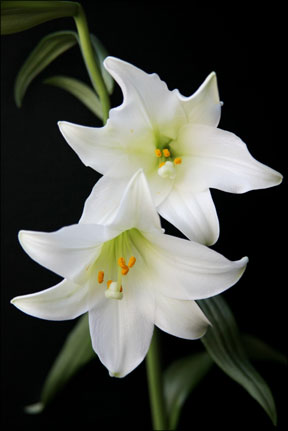Q. Dear Elizabeth: Spring is in the air and I am dreaming about my garden! Last autumn, my husband and I worked hard in our yard planting four dozen lily bulbs and we cant wait to admire the results of our efforts. Im writing to you because of a news story I read this 288 week, warning cat owners about the danger of poisoning by lilies! Ive had cats all my life and never heard of a cat poisoned by eating a lily – is this really a concern or just media hype? My cat stays strictly indoors so Im not worried about her, but I do see our neighbors cats out and about. Do you think I should warn my neighbors about the lilies weve planted? Id hate my dream garden to become a nightmare for one of our furry neighborhood friends. Thanks so much for your important, very timely questions! Yes, lilies ARE poisonous to cats. They are nephrotoxic, meaning that ingestion results in kidney damage. My colleagues at the Cornell Feline Health Center tell me that all plants in the genus lillium and genus hemerocallis carry the toxic principle, including common garden varieties (Stargazers, tiger lilies and daylilies) and the beautiful Easter lilies that are often displayed as indoor potted plants and cut flowers during the spring holidays. Cats can be poisoned by ingesting ANY PART of a lily: leaves, stems, flowers, stamens … even the pollen is toxic. The toxic principle has not been fully characterized, but it is quite potent – ingestion of even a small part of a lily can result in kidney failure. If a cat owner discovers that their cat has ingested a lily, or had even minor exposure such as biting a leaf or getting pollen on their coat or whiskers, it is vital that they contact their veterinarian immediately. My colleagues tell me that aggressive treatment begun within 18 hours of ingestion has the best chance of preventing serious kidney damage. Emergency therapy can prevent fatalities after lily intoxication, but prevention would be much better, of course! Cat owners should avoid bringing potted lilies into the house, and should be certain to check bouquets of cut flowers carefully before display. Its important to remember how resourceful we indoor cats can be – if we want to nibble on some fresh greens well find a way to open a closed door or jump onto an inaccessible counter top to get to a plant or vase. My best advice is to strictly ban lilies from inside a cats house. Now, what about your dream garden? Although the majority of reported cases of lily intoxication involve indoor cats nibbling on a plant or bouquet brought into the house, it certainly is possible for our outdoor friends to suffer the same nephrotoxic effects after exposure to garden plants. My advice is to let your neighbors know that you have lilies planted in your garden and that youve learned that they are on the list of plants toxic to cats. You may want to refer your neighbors to these excellent websites for more information: 



